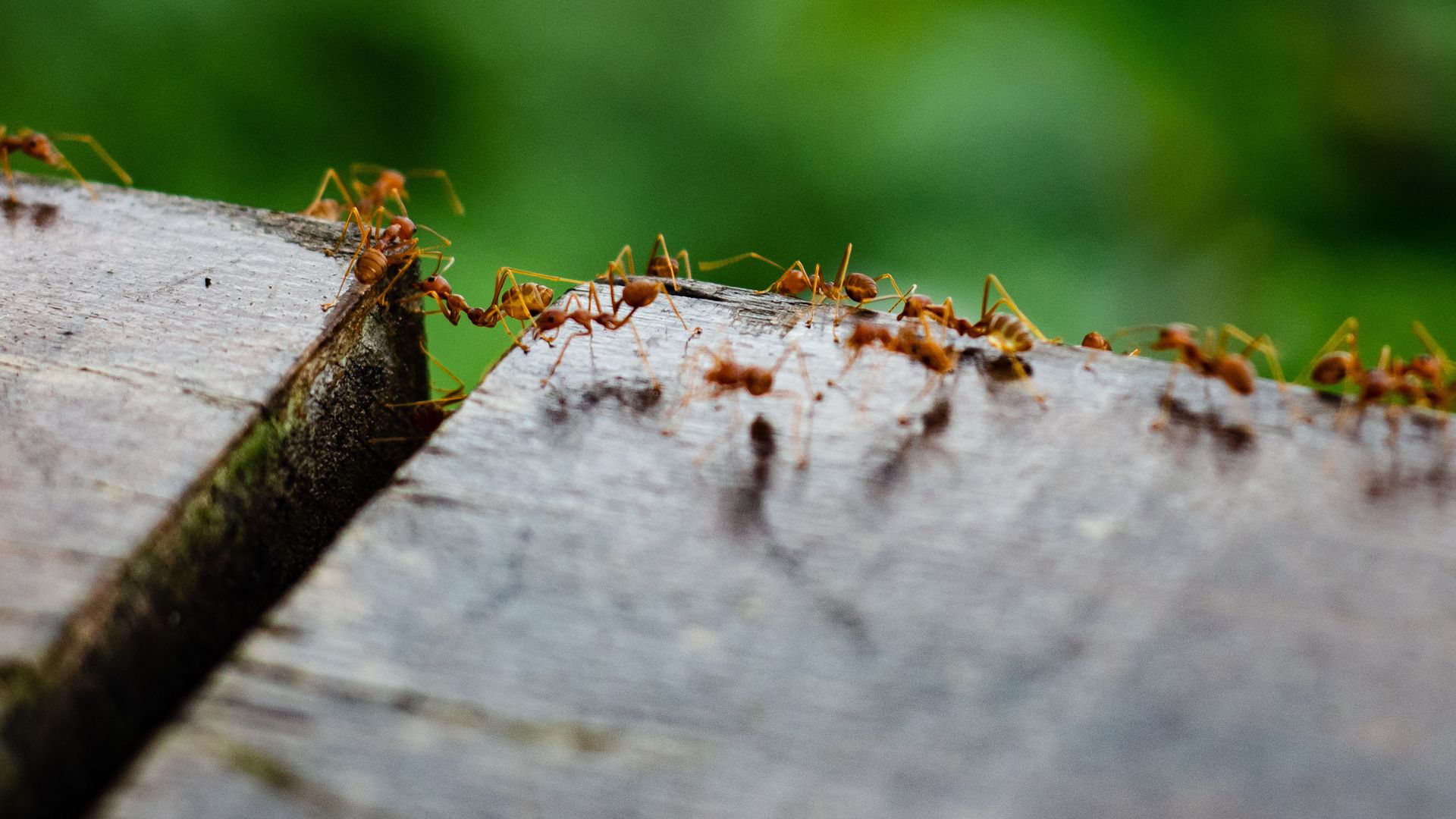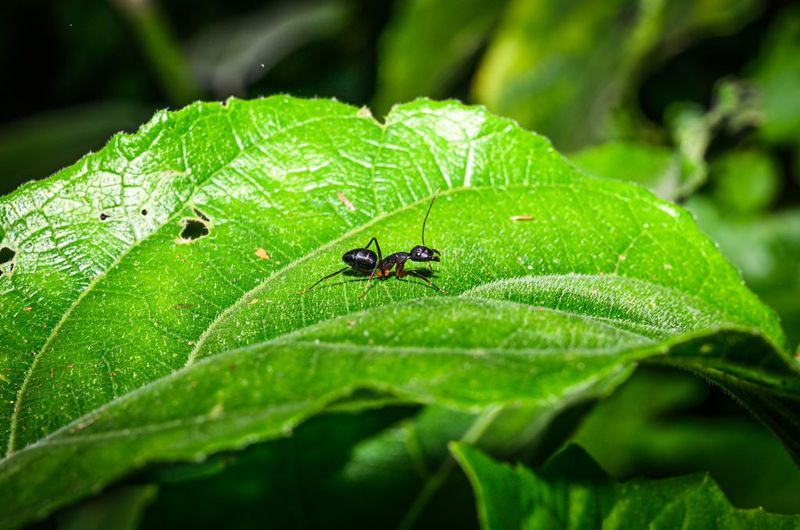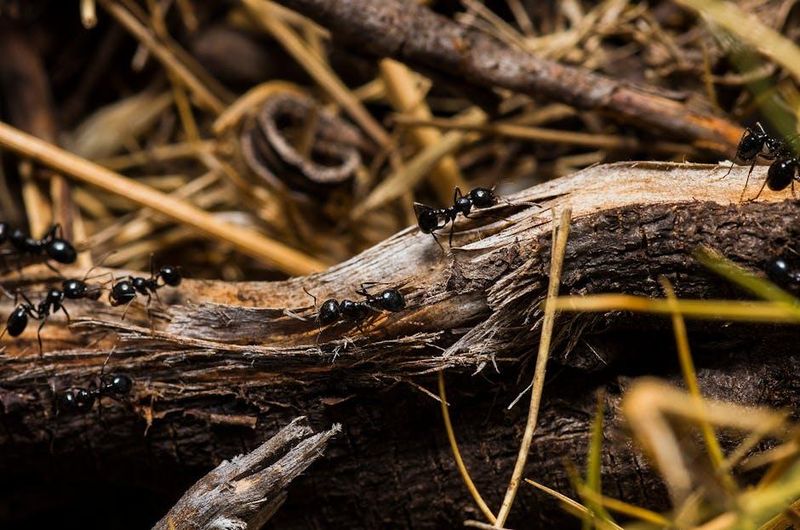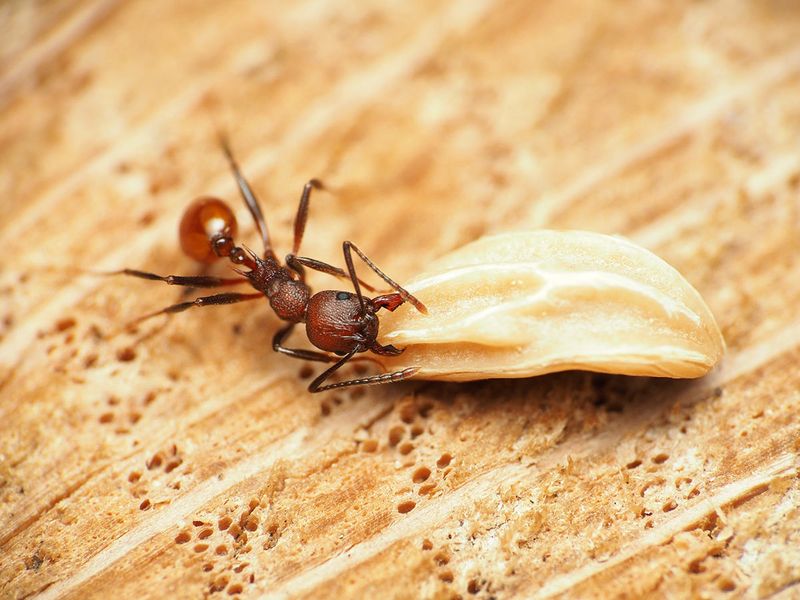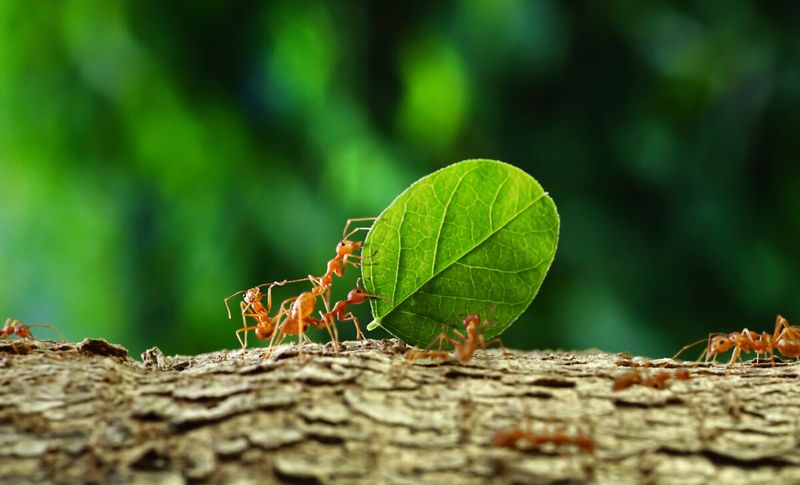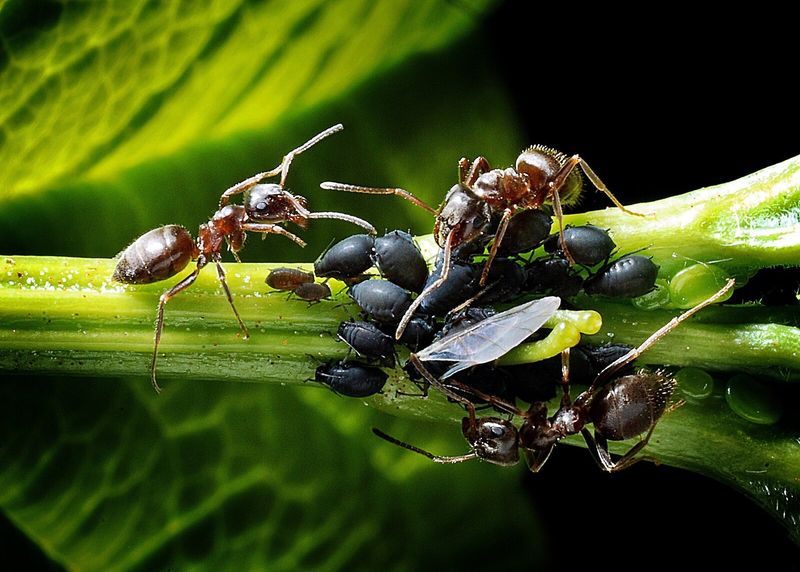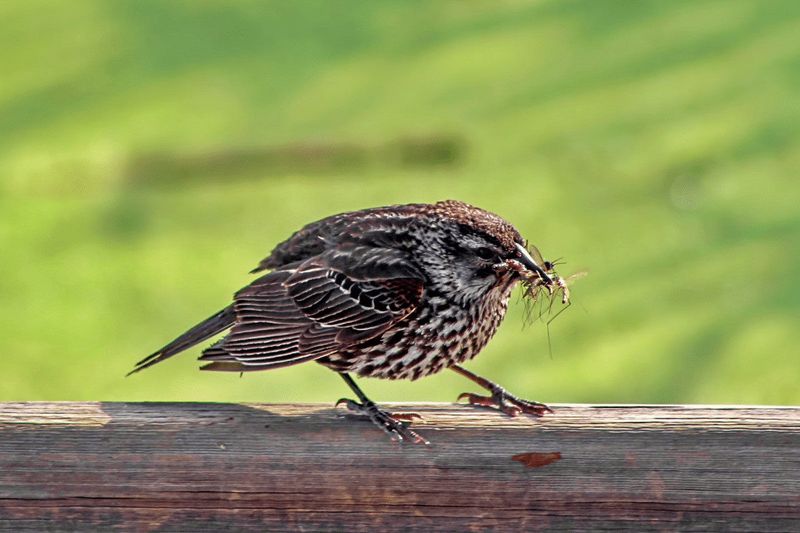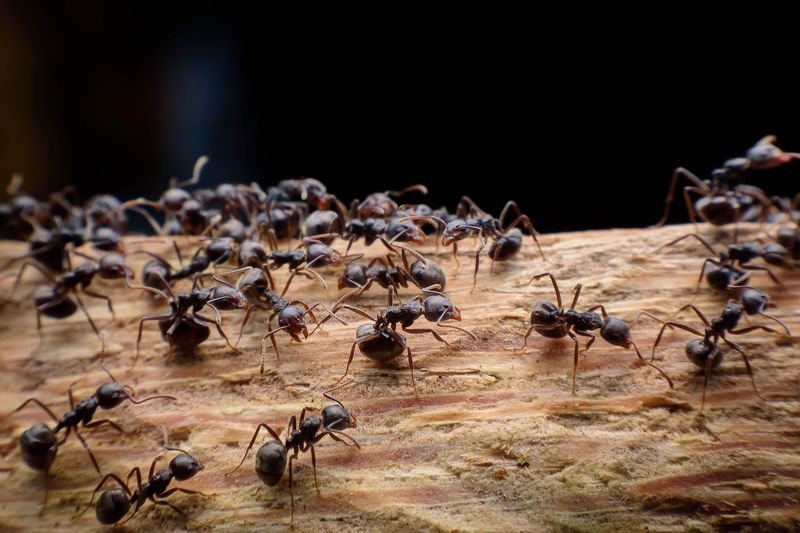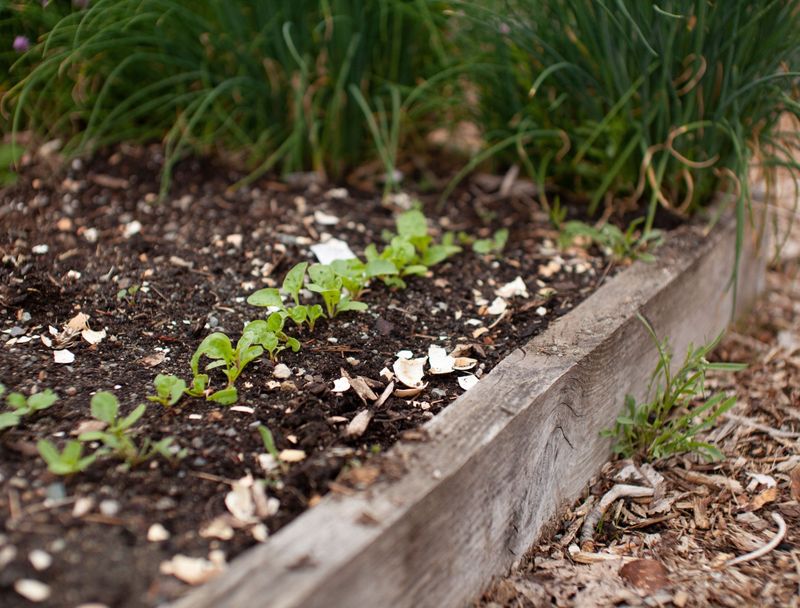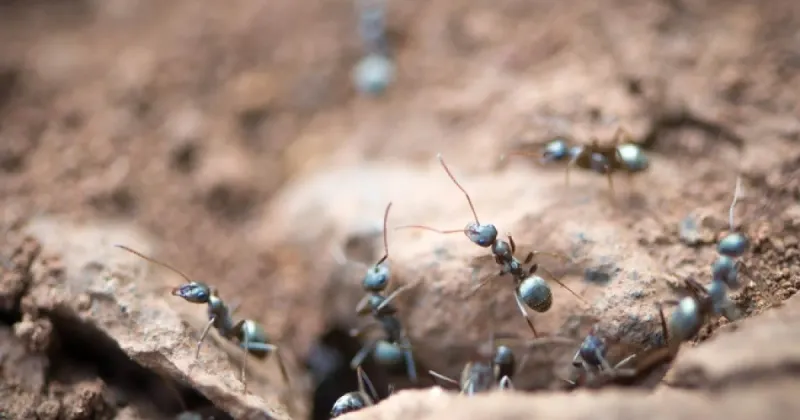Spot ants in your yard and it’s tempting to reach for the bug spray—but pause for a moment. These busy little insects aren’t just trespassers; they’re tiny powerhouses doing some serious work beneath the surface. Believe it or not, your garden might be better off with them around.
Ants aerate the soil as they tunnel, helping water and nutrients reach plant roots more easily. They also clean up the garden, carrying away dead insects and organic debris. And in some cases, they even protect plants by preying on pests like caterpillars.
Sure, they can be pesky if they invade your home, but in the garden? They’re unsung heroes of a healthy ecosystem. So before launching an all-out ant offensive, consider letting nature run its course—with ants as part of the team.
1. Natural Pest Controllers
Those little armies crawling around your garden are actually on patrol for troublemakers. They hunt down and feast on many common garden pests that would otherwise damage your plants.
Last summer, I watched in fascination as a line of workers carried away caterpillars that had been munching on my tomato plants. The natural extermination service they provide saves both money and avoids chemical pesticides.
Research shows a single colony can consume up to 100,000 pest insects annually, providing round-the-clock protection for your garden without any effort on your part.
2. Soil Aerators Extraordinaire
Tunneling through soil creates natural pathways for water, oxygen, and nutrients to reach plant roots. The extensive network of chambers and tunnels they dig works better than any garden tool you could buy.
My vegetable patch struggled with compacted clay soil for years. After noticing several colonies had moved in, the difference in soil texture became remarkable – looser, more crumbly, and healthier looking.
Just one medium-sized colony can move several pounds of soil in a year, creating natural irrigation systems that benefit your entire yard without you lifting a finger.
3. Seed Dispersers For Free
Many species collect and transport seeds as part of their food-gathering activities. This free gardening service helps spread native plants throughout your yard without any effort from you.
Walking through my backyard last spring, I noticed wildflowers popping up in places I’d never planted them. The tiny gardeners had been busy moving seeds to new locations, creating beautiful surprises.
Some plants even produce special nutrient packets on their seeds specifically to attract these helpful creatures, who then carry the seeds to ideal growing locations up to 70 feet away from the parent plant.
4. Nature’s Cleanup Crew
Dead insects, decaying plant material, and other organic debris disappear quickly when these industrious workers are around. Their scavenging habits keep your yard cleaner and reduce disease-causing organisms.
During a family picnic, I watched in amazement as crumbs vanished within minutes. What would have attracted flies and other nuisance insects was efficiently removed by the yard’s natural sanitation department.
The cleanup services provided help break down organic matter faster, returning nutrients to the soil while preventing the buildup of potentially harmful decay that could affect plant health.
5. Aphid Farmers With Benefits
Some species have fascinating relationships with aphids – they protect and “farm” them for the sweet honeydew they produce. Before you think this is bad news, consider the bigger picture.
For years I battled aphids on my roses until I realized the presence of their caretakers actually limited aphid population explosions. The relationship keeps aphid numbers steady rather than booming out of control.
These natural farmers also attract beneficial insects like ladybugs and lacewings that feed on aphids, creating a balanced ecosystem that regulates pest populations without chemical interventions.
6. Food Source For Wildlife
Numerous birds, reptiles, and other wildlife depend on these protein-packed morsels as a critical food source. Eliminating them from your yard could impact the entire food chain.
My bird feeder used to attract just a few visitors until I noticed woodpeckers, flickers, and other insect-eaters spending time on my lawn. They weren’t after seeds – they were feasting on the abundant protein source beneath their feet.
Each colony represents thousands of nutritious meals for wildlife, making your yard more attractive to biodiversity while supporting local ecosystem health in ways that artificial feeding never could.
7. Weed Seed Eliminators
Many species have a particular fondness for weed seeds, collecting and consuming them before they can sprout in your lawn. This free weeding service can significantly reduce unwanted plants.
The corner of my yard that hosts several colonies consistently has fewer dandelions and crabgrass than areas where I’ve tried to eliminate them. I’ve stopped fighting these helpful gardeners and let them handle the weed control.
Studies show certain species can collect up to 30% of available weed seeds in an area, providing a natural pre-emergent weed control that works without chemicals or backbreaking labor.
8. Soil Nutrient Enrichers
The food waste, dead insects, and plant material they bring into their nests creates natural compost deep within the soil profile. This enrichment process happens right where plant roots need it most.
My garden’s soil quality has improved dramatically since I stopped using ant killers. The areas around established colonies now produce noticeably larger vegetables with less fertilizer needed.
Their waste chambers function as underground compost bins, concentrating nutrients and beneficial microbes that enhance soil fertility while improving the structure and water-holding capacity of the surrounding earth.
9. Early Warning System
Changes in their behavior can alert you to environmental issues in your yard before plants show signs of stress. Their sensitivity to environmental conditions makes them excellent bioindicators.
Last year, I noticed unusual activity with colonies abandoning certain areas of my yard. Investigation revealed a water pipe leak that hadn’t yet surfaced – saving me from a major repair and water bill.
Paying attention to where they thrive or avoid can reveal soil problems, chemical contamination, or moisture issues that might otherwise go undetected until significant damage occurs to your landscape plants.
10. Pollination Helpers
While not as famous as bees, many species visit flowers for nectar and inadvertently transfer pollen in the process. This supplemental pollination service benefits many garden plants.
I’ve watched them crawling in and out of my squash blossoms early in the morning before bees become active. The improved fruit set that year made me appreciate these tiny pollinators I’d previously overlooked.
For plants with small, low-growing flowers, these ground-dwelling insects often provide more consistent pollination than flying insects, especially during weather conditions that keep bees from flying.
11. Indicator Of Healthy Soil
A diverse population in your yard typically indicates good soil health and a functioning ecosystem. Their presence suggests your garden has the biological activity needed for plant health.
When I first moved into my home, the chemically-treated yard had almost no visible insect life. As I transitioned to organic practices, different species returned – a living gauge of improving soil conditions.
Ecologists consider these insects keystone species in many environments, meaning their presence supports dozens of other organisms and ecological processes that contribute to overall garden vitality.
12. Natural Fungus Control
Many species produce antimicrobial substances that help control harmful fungi in soil. This natural protection extends to your plants’ root systems and can prevent certain diseases.
The vegetable bed nearest to a large colony consistently shows fewer signs of damping-off disease in seedlings. I’ve stopped treating this area with fungicides, relying instead on my tiny garden assistants.
Research has shown that some of the compounds they produce are being studied for potential use in agriculture and medicine, highlighting how valuable these natural chemists are to our gardens and beyond.
13. Teaching Tools For Children
Few creatures offer better opportunities to teach children about nature, cooperation, and ecosystems than these observable insects. Their colonies provide endless learning moments right in your backyard.
My nephew developed his love of science watching colonies in our garden. We made simple observations about their behavior that sparked questions leading to library books and eventually a science fair project.
Children who learn to observe rather than fear insects develop greater environmental awareness and respect for the natural world – valuable lessons that begin with simply watching rather than squashing these fascinating creatures.
14. Reduce Chemical Dependency
Working with rather than against these natural inhabitants means fewer pesticides in your environment. This reduction in chemicals benefits all living things in your yard ecosystem.
After years of fighting a losing battle with various insecticides, I stopped treating my yard completely. Within two seasons, a natural balance emerged with predatory insects controlling potential pests.
The money saved on chemicals can be substantial – I’ve redirected my pest control budget toward beneficial plants and garden improvements that further enhance the natural ecosystem services provided by these and other beneficial insects.
15. Geological Impact Over Time
Collectively, these tiny creatures move more soil than earthworms in many ecosystems. Their long-term presence shapes the physical and chemical properties of your garden’s soil profile.
The area around my oak tree where colonies have been established for years has remarkably different soil compared to newer parts of my yard. The improved drainage and mineral distribution has benefited everything planted there.
Charles Darwin himself studied their soil-moving capabilities, calculating that they could completely turn over the top six inches of soil in a garden within a decade – a natural tilling service that improves soil without damaging its structure.

